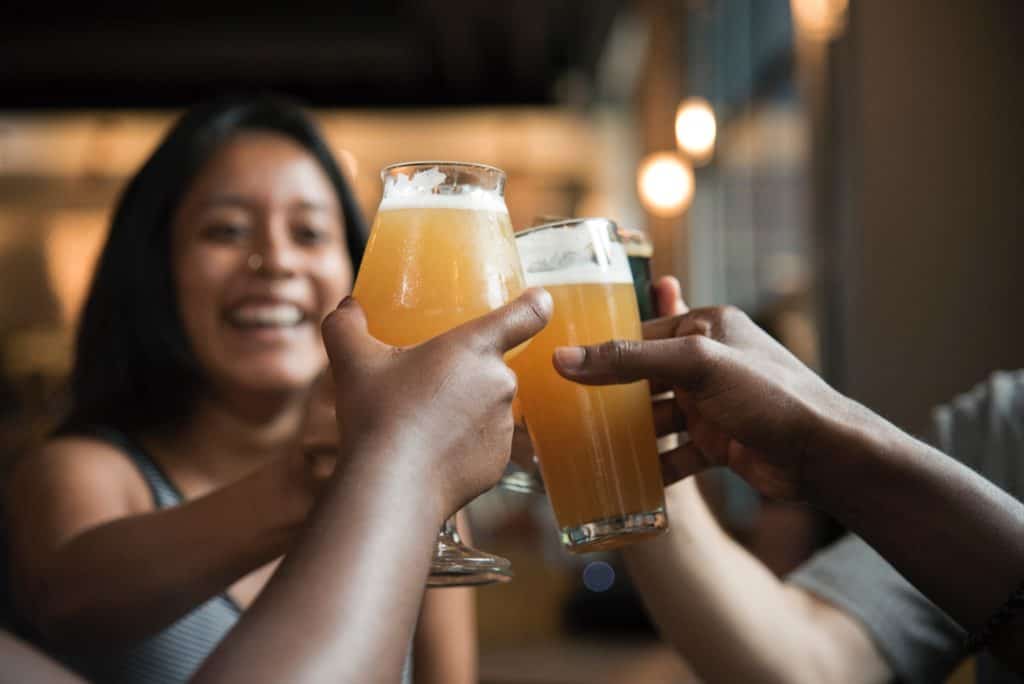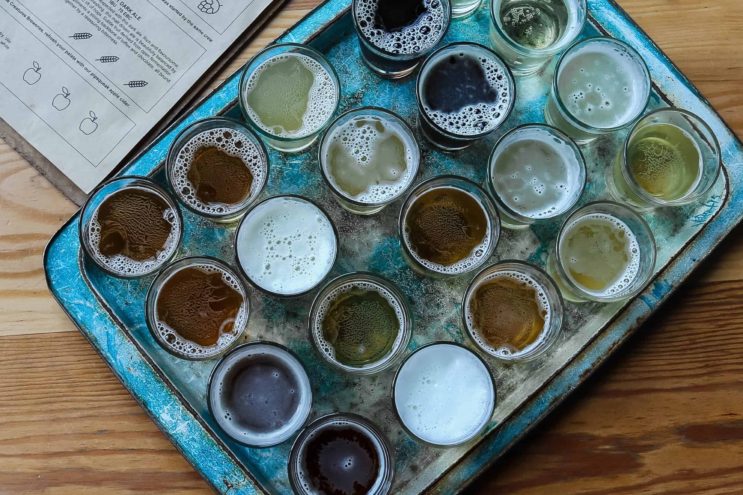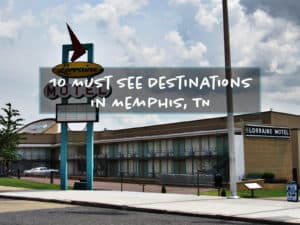As the home for Anheuser-Busch InBev, beer in St Louis is a big deal. Today, there are dozens of taphouses and microbreweries all over the city. But it wasn’t always this way. I am by no means a beer expert, but exploring the beer scene during a visit to The Gateway to the West is definitely a must, here’s why.
St Louis Beer History | A Brief Explanation
For almost as long as St Louis has been around, the people have been brewing beer. Immigrants from Germany and Bohemia first settled in the area in the early 1800s. Their main skills were brickwork and beer. In the present-day neighborhood of Soulard, you will notice all the red brick buildings which were built by the immigrants who settled in the area.
Soon after settling, and with hopes of a new life in America, many breweries started to form. The two most notable brewers were Eberhard Anheuser’s Bavarian Brewery and Adam Lemp’s Western Brewery.
The Beginning of Anheuser-Busch
Eberhard Anheuser came from Germany in 1842 as a soap and candle maker. He was a creditor to the Barvian Brewing Company, which he ended up purchasing during their struggling times in the 1860s. The company was renamed Eberhard Anheuser and Company, but a year later his two daughters married into the Busch family who was also from Germany. Adolphus Busch worked closely with Eberhard to develop the company. Busch bought into the business in 1879 and the company was renamed Anheuser-Busch.
Anheuser died in 1880 making Busch the president. During this time, Busch’s marketing efforts and business savvy skills drove the company into success. He focused on his core brand Budweiser, which was the most successfully distributed beer in the country before Prohibition.
In 1901, the company surpassed one million barrels of beer sold.
During Prohibition, the company was led by August A Busch, son of Adolphus Busch. Anheuser-Busch survived Prohibition, by using their factories to produce almost everything they could think of. At one point, they were producing ice cream.
Once Prohibition had been lifted in 1933, August A. Busch paved the way with new technologies like refrigerated boxcars to drive national sales. This was the start of the global company that we now know today as Anheuser-Busch InBev.

The Tragedy of Lemp Brewery
Adam Lemp was originally a grocer, but he also offered his customers something special that they couldn’t get anywhere else at the time, lager beer. Lager beer required a certain temperature to be aged, and with St Louis’ natural limestone cave system, the location couldn’t have been more ideal. Adam Lemp died a millionaire and his son William took over the business after his father passed away in 1862.
Lemp brewery held the title of the largest brewery in the city by 1870.
Then, tragedy struck. In 1901, the surprising death of William Lemp’s favorite son and heir to the business suddenly caused a stir within the family. Still grieving from his son three years later, William shot himself in the head at the family mansion. His other son, William J. Lemp Jr., took over the company.
By this point, the company was in a tailwind spiral. Prohibition in 1919 forced the brewery to close its doors. A long family tradition suddenly stopped. Elsa Lemp, daughter of William J. Lemp Jr., was the heiress to the company, but she suffered from severe mental illness after losing millions and she also shot herself in the family mansion. After having to liquidate most of their assets, William J. Lemp Jr. sold the brewery for $600,000 and became the third Lemp to commit suicide in the mansion. The brewery had a value of $7 million.
The Lemp Mansion, today, is a restaurant and bed and breakfast and also turns into a haunted house during Halloween. It is one of the most haunted places in America.
The Turn of the Century | Beer in St Louis
With Anheuser-Busch dominant in the market, it was quite difficult for any other company to be noticed. That is until Schlafly.

Big Risk Big Reward
Tim Schlafly co-founded The Saint Louis Brewery with his colleague Charles Kopman. They wanted to bring pale ales to their home in St Louis after experiencing the beer culture in England. While they knew it would be difficult, they pursued their idea with the help of Charles Kopman’s son, Dan. Having worked in breweries in England, he was the perfect person to help them get started.
Upon further research, they realized that this idea would be harder to get off the ground than they thought. Previous Missouri State laws did not allow microbreweries to exist. So, they needed to first, change the law. Which is exactly what they did. After passing an amendment to the law in 1991, The Saint Louis Brewery was given the first microbrewery license in Missouri.
As excited as they were, this came with a catch. They could only make 2,500 barrels per year and were only allowed to sell directly to consumers.
So they bought a building on Locust St and opened The Schafly Tap Room. The building was previously a print shop with high ceilings and great architecture. After a few months of renovation, The Tap Room was ready to be opened on December 26, 1991.
Battle with A-B
Next up, was their battle with Anheuser-Busch, who wasn’t going to just let anyone start producing their own beer on their home turf. Customers at The Tap Room were enjoying the beer and began asking if they could find it anywhere else. Unfortunately, the answer was no due to state law. The owners knew that in order for them to grow, the law needed to change again. Between lawyers and Anheuser-Busch lobbyists, it looked like a losing battle. With a lot of back and forth, eventually, an agreement was made.
They were allowed to sell at off-premise locations but were only allowed to produce 10,000 barrels per year.
Paving the Way for Microbreweries
It was a great day when one could walk into a restaurant and order Schafly beer from the tap. However, customers and retailers wanted a bottled option. So, because of the 10,000 barrel limit, Schalfy began looking into other states that could produce bottled beer to their standards. He partnered with a company in Minnesota and bottled Schafly hit the markets in 1996.

This wasn’t a real long-term option and Schlafly really wanted to produce as much beer as he wanted to meet demand. So he went back to changing the law again but soon found out that the people in the State office had changed in his favor. They no longer were strongly opposed to limiting production. All Schafly had to do was apply for a different license and he could produce as much beer as he wanted.
The next opportunity in expanding the business was to create Schafly Bottleworks. The company bought an old supermarket in the suburb of Maplewood. Renovation and production took a little bit longer than expected, but bottles made their way across St Louis.
When Anheuser-Busch was sold to InBev in 2008, The Saint Louis Brewery became the largest American-owned brewery in the city.
List of St Louis Microbreweries
There are many and far between, but the microbrewery industry is strong in St Louis. These are just a few of the top picks.
Opened in 1991, Schafly brews a number of ales, stouts, and IPAs. Their best seller is Schafly Pale Ale.
Opened in 2011, Urban Chestnut has 3 locations within St Louis. They focus on being that quirky best friend with all the good ideas. Known for mixing it up and being a little on the unconventional side.
Opened in 2011, 4 Hands is located in LaSalle Park. They produce 7 year-round flavors along with seasonal selections.
Opened in 1995, Morgan St Brewery is located on the famous Laclede’s Landing in Downtown St Louis. They are well known for their specialty beers.
Opened in 2006, Square One is located in Lafayette Square. They strive to create flavors you won’t find anywhere else.
Opened in 2011, Perennial focuses on using seasonal ingredients with an American and Belgium craft style.
Have you been to St Louis? Which beers have you tried? If you need ideas on where to go in St Louis, you can find all you need to know in this neighborhood guide.




What an interesting post – I had no idea about the story and the tragedies behind Budweiser!
Pingback: St. Louis Neighborhood Breakdown - The Hidden Coconut
St. Louis is one of our favorite places to visit. This is some great history! I had never heard of the Lemp family – what a tragic story! Thanks for sharing.
That is a fascinating history of St. Louis and the beer that made it. I loved the picture along the street because I think we’ve been there. Even though I’m not a beer drinker, it is such an important part of St. Louis that understanding the history is important.
I completely agree! St Louis has a great history that has really shaped the city to what it is today.